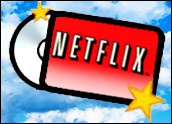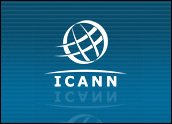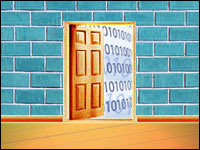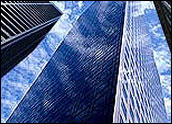
The flash mob dance by the world’s most powerful groups of agencies against ICANN’s new gTLD domain name program must not be taken lightly. After all, these global bodies represent the real manipulaters of emotions. They influence our taste, habits and behavior — like type of cereal, length of skirts and width of ties. Commercials and reality shows teach us how to role play in cubicles or dance at weddings.
They are the advertisers, public relationists, market researchers and logo-slogan centric magicians. They have successfully taught us commercialization and modernism. They show us brighter and more colorful ways, but reckless hyper-consumerism is out of step with our current depressive, tumultuous times.
Now they feel threatened by ICANN’s new gTLD domain name system. What are these nostalgic mad men so afraid of? What’s triggering their fear factor? Over the years, gTLD issues have percolated, broiled and roasted around the world in huge, open public grillings. Why is there now such a sudden spring of protest, with demands for regime change at best?
In Support of Opposition
Some of the panic-button pushing for top established brands and their agencies is due to the eruption of “name fortification.” For example, a telco acquires “dot cell,” “dot mobile,” “dot call,” etc., and fortifies its current brand while creating a digital barrage against a particular well-established name brand.
In the right hands, a gTLD is surely a game changer. Imagine a colorful maze in which hundreds of mega brands create their own brand new stars and set the stage for galaxies to collide. Sure, this may happen, as it did when domain names were introduced. Old established brands were pulled out by their roots. Many sectors were drastically changed or wiped out overnight, while far too many blossomed. As a global cybername-brand marketing weapon, a gTLD can be very powerful.
Another issue for holders of “mega-dot-com-brands” is the emergence of better and sharper dot-brand names with wider capability to expand along customer touchpoints. What would happen, for example, if Expedia.com, eTrade.com, Travelocity.com or eBay.com were confronted with a better dot-brand name — one with more magic? Overnight, it could replicate profusely around the world, with unlimited sub-name-brands, directly threatening competitors. A gTLD offers the fastest and the cheapest tools for the right combination to expand a company’s base and catapult it into the stratosphere.
ICANN took years to build the gTLD program but only allocated a few months for advertisers to sort it out. On the other hand, what if agencies had been asked 20 years ago to accept the domain name system? The fear factor would have been equally immense, as early domain names too crushed very old, and at times, deeply cherished models.
Domain names rapidly evolved all by themselves without any advertising campaign and quickly engulfed the world, showing no mercy. They changed the landscape, but overall they created wonders for the world at large. The magic is still unfolding every second as we reap the rewards of a mobile and interconnected world.
Still, the gTLD system is a great topic for boardrooms as Jan. 12, 2012, draws closer. On that date, ICANN will accept applications for proposed names from around the world. The global race is on.
Fear Factors
Loss of Power Play: A gTLD is primarily a powerful cyberbranding class act for larger brands skating on regional or global terrain. The more you digitally compress a traditional campaign, the more its brand-name identity becomes fluid and rises on the global cyberbranding stage, reducing dependency on traditional advertising support.
Remember when, in order to make an impact, a synchronized series of hundreds of full-page newspaper ads needed to appear on the same day around the world? This now can be achieved instantly and repeated endlessly — and all for a fraction of cost.
Imagine thousands of big brands acquiring new gTLDs. Imagine their hyper name-brand identity expansion being domain-name management driven, with fees directed to ICANN, domain name registries, registrars, Google AdWords, SEO service providers, etc. What special role would be left for the ad agencies to play in this space?
Some 18,700 organizations worldwide may directly profit from this new gTLD platform with potentially tens of billions in new revenue directed to domain services sectors, according to a study by ABC Namebank. Would agencies be sidelined, or would they become new owners of domain registrars in order to preserve their power play?
Advanced Name Games: The winners and losers of gTLD applications ultimately will be determined by the true powers behind the proposed names. Some very established name brands — regional or global — may not be able to qualify.
When you begin to accept “one Internet, one world,” it becomes very desirable to start thinking “one name, one owner” to achieve market domination. The force of the logo-slogan centric hammer coming down during most agencies’ branding exercises precludes them from tackling global corporate nomenclature complexities. Name identities are never the ultimate drivers of image positioning in their world, but logos and slogans are.
They worked wonders during the last century. There is nothing very complicated about this approach. Its simplicity is evident in the volumes of pages of major international trade directories, where identical and similar names gasp in tight columns. Is this why senior marketers and brand pushers are quiet on gTLD naming issues while their own associations are parading with paper-mache monsters chanting warnings of cybersquatting?
In this century, the digital compression of global cyberbranding is forcing name identities to do all the heavy lifting, and the gTLD system will further accentuate their power.
The new gTLD approach represents a logical and rightful nomenclature evolution toward global cybername-branding expansion. The subject of corporate nomenclature at this level of global-naming complexity is neither taught at the world’s leading universities nor discussed in top MBA courses. Less than 2 percent of marketing executives have any understanding of gTLD and would not be able to articulate the subject in any way without formal study, AARM research shows.
Wired Hub of Horror
Among the developed nations, fear of one Internet, one world is slowly growing. Some 3 billion online users could create a round-the-clock global pulse of opinion, more powerful than any single nation could withstand.
The world is like a fluid, interconnected ocean of hyperdigitized social and mobile media. A new search-engine-dependent society is devouring information via personalized interaction and steadily crushing the old medium. All communications — whether corporate, public, social or political — will face new forces of change on a global scale. Real change cometh; the Internet will mature further and take some sudden swipes at our traditional practices.
The gTLD system is now shaking the tree by pushing global corporate-nomenclature issues to the top of the agenda. The shift to Googlized and AdWord-dependent marketing indicates that we are simply driven by name identities. The search-engine-dependent model has split global corporate nomenclature down the middle: A name is good — that is, workable and expandable — or it’s a dud.
What does this mean to brand owners and creative services? Can brand holders adjust fast enough? Are they ready to accept a universe of 3 billion online? Can they meet the challenge of one Internet, one world?
Can they recognize the ultimate goal of “one name, one owner” — currently enjoyed by less 1 percent of brand name owners in the world? Will they now acknowledge the hidden cost-saving power of the Five Star Standard of Naming? Will they become good spectators or real game changers?
Name evaluation should not be the next big hush-hush word in the boardroom. Only organizations that can boldly face the obvious and hidden strengths and weaknesses of their current names can truly cope with the future, in light of new global cybername complexities.
The fear factors created by partial knowledge are merely part of the learning process, while the image of successful name brands all over the world will be increasingly and primarily driven by the power of the name. This point alone is contentious enough to demand an open debate. What’s your next move?










































Social Media
See all Social Media